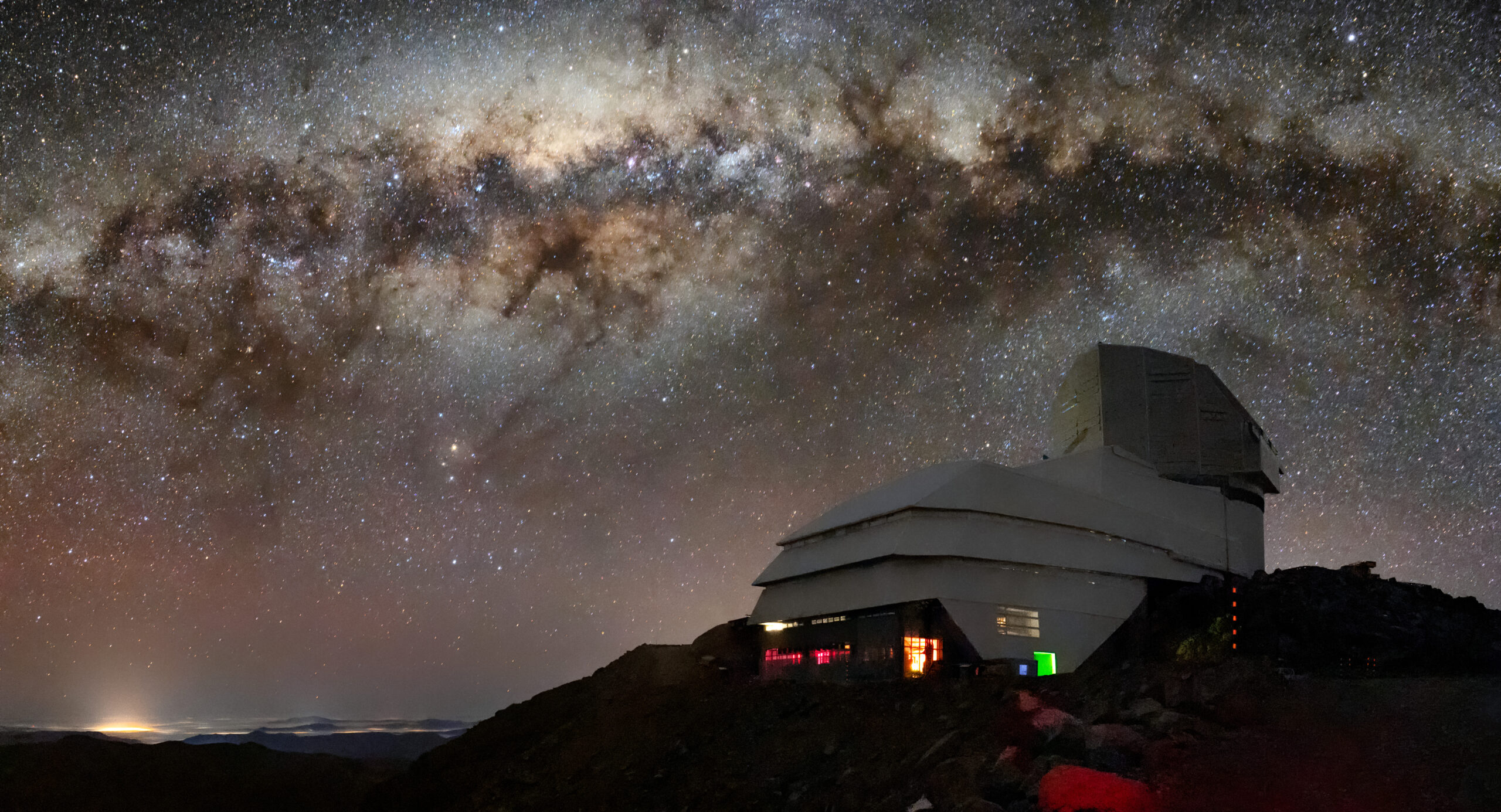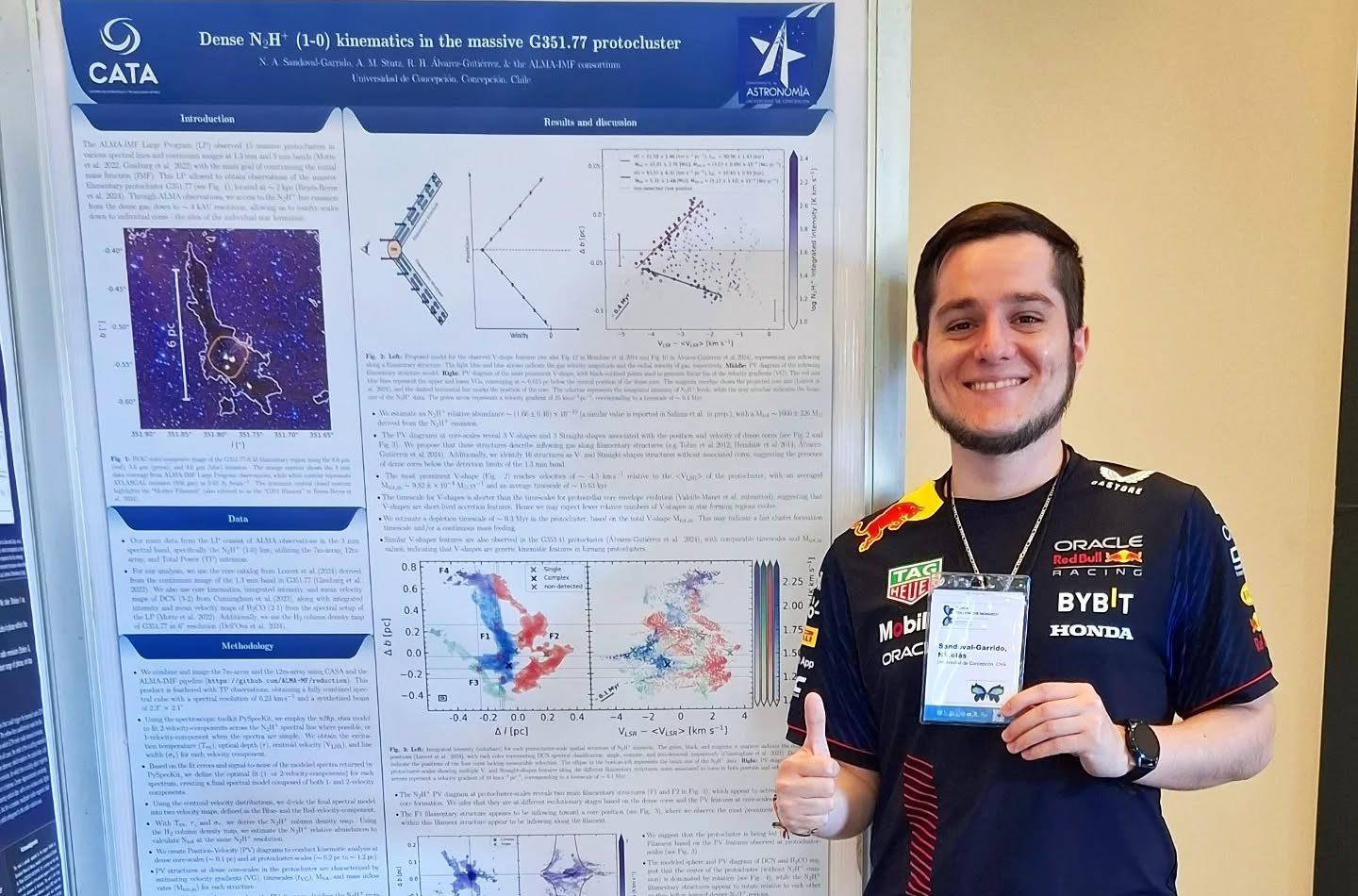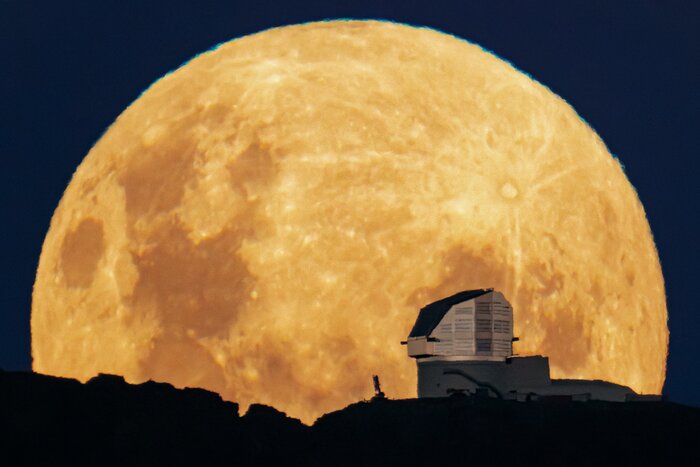
Students from Valparaíso approached the mysteries of the Universe with CATA astronomer
The elementary and middle school students of International School of Valparaiso learned about how black holes are born, what would happen if the Moon did not exist and how our natural satellite was born, together with José Utreras, in charge of Outreach Content at the Center.
As a way of approaching scientific knowledge in a pleasant way and in simpler terms, the International School of Valparaiso held its “Science Week” and invited CATA to present during the Astronomy Day.
José Utreras, in charge of Outreach Content of the Center, presented a wide range of topics with particular approaches, to all levels of the school cycle and middle school of the educational establishment.
“For the Center it is very important to promote astronomy from an early age, to awaken the curiosity of those who could be potential scientists in the future. Also to bring closer a knowledge that has proven to be extremely attractive to children and young people. Chile is a privileged country in the study of astronomy and we should all be interested in learning more about the Universe,” said the CATA astronomer.
A vision that was shared by Francisca Cordero, Physics and Natural Sciences teacher at Colegio Internacional de Valparaíso and manager of this meeting.
“I believe that this type of activity is fundamental because it develops skills that will help them to be better citizens and better human beings. It promotes critical and logical thinking. It also promotes creativity and innovation, which are essential skills to make informed decisions on a relevant topic, especially in these times when there is so much misinformation on social networks. We are very grateful to CATA for bringing science to our students in a playful way and making simple what is, to some extent, very abstract”.
Black holes and the Moon
During this day of “Science Week”, high school students faced the question: ¿Do black holes exist?
In this talk, the students learned that they are astronomical objects with such a strong gravitational force that nothing, not even light, can escape from them and that they are formed when a star runs out of fuel and collapses inward. In addition, they learned how long it takes for a black hole to form, what are the proportions of what it looks like and answer questions such as: is it possible for a black hole to “eat” an entire galaxy; what would happen if we fell into a black hole; or what is the farthest black hole that has been observed?
Then, the program continued with the exhibition What if the Moon had never existed?, which focused on students from 5th to 8th grade. Here the objective was to illustrate the positive impact that the Moon has on the Earth, since its gravity prevents our planet from wobbling too much on its axis, which helps stabilize our climate. It also explains the important role it plays in creating and influencing ocean tides and the oscillations in sea level that last approximately half a day.
In addition, our natural satellite plays an important role in stabilizing the axis of rotation. In other words, it maintains the Earth’s inclination at about 23 degrees with respect to the plane of its orbit. This condition is responsible for the seasons. Without the Moon, the rotation axis would be more unstable and could cause dramatic climate change with unbearably high or low temperatures. On the other hand, they also discussed that without it, nights would be completely dark and the stars would be much more visible, along with the disappearance of eclipses, a phenomenon of worldwide interest.
The last talk was about the “Birth of the Moon”, aimed at students in the first cycle of school, between 1st and 3rd grade, where the youngest students learned about the origin of our natural satellite, which was formed 4.5 billion years ago. This, according to the most accepted theory, which points to the collision of the Earth with a protoplanet similar to Mars, which would have launched into space large amounts of matter and where the remains of the collision orbited the Earth, accumulated and gave it shape.
Finally, the day ended with a workshop on Exoplanets, aimed at 7th grade, where students created their own planetary systems randomly, based on a red, yellow or blue star and saw the consequences that this configuration gave to each of its rocky planets, such as the Earth. In this way they were also able to understand how special our own solar system is.
Recent news
-
 Publicado el: 30/06/2025CATA Director strengthens ties in her second institutional tour
Publicado el: 30/06/2025CATA Director strengthens ties in her second institutional tour -
 Publicado el: 26/06/2025Vera C. Rubin: the telescope that watches the sky and anticipates the future of astronomy
Publicado el: 26/06/2025Vera C. Rubin: the telescope that watches the sky and anticipates the future of astronomy -
 Publicado el: 25/06/2025CATA researchers appointed as Full Professors at Universidad Andrés Bello
Publicado el: 25/06/2025CATA researchers appointed as Full Professors at Universidad Andrés Bello -
 Publicado el: 25/06/2025Study by young Chilean astronomer reveals new key parameter for understanding star formation
Publicado el: 25/06/2025Study by young Chilean astronomer reveals new key parameter for understanding star formation -
 Publicado el: 19/06/2025Rubin: The Universe’s First “Movie” That Will Transform Astronomy
Publicado el: 19/06/2025Rubin: The Universe’s First “Movie” That Will Transform Astronomy
Categories list
- Acknowledgments 18
- Astrobiology 5
- AstroCluster 1
- Black holes 13
- Corporativo 49
- Cosmology 4
- Descubrimientos 19
- Disclosure 45
- Exoplanets 13
- Extension 4
- Galaxies 17
- Galaxies formation 2
- Inter y Transdisciplina 2
- Local Universe 13
- Publications 5
- Sin categorizar 31
- Solar System 11
- Stellar formation 6
- Technology 9
- Technology Transfer 12


